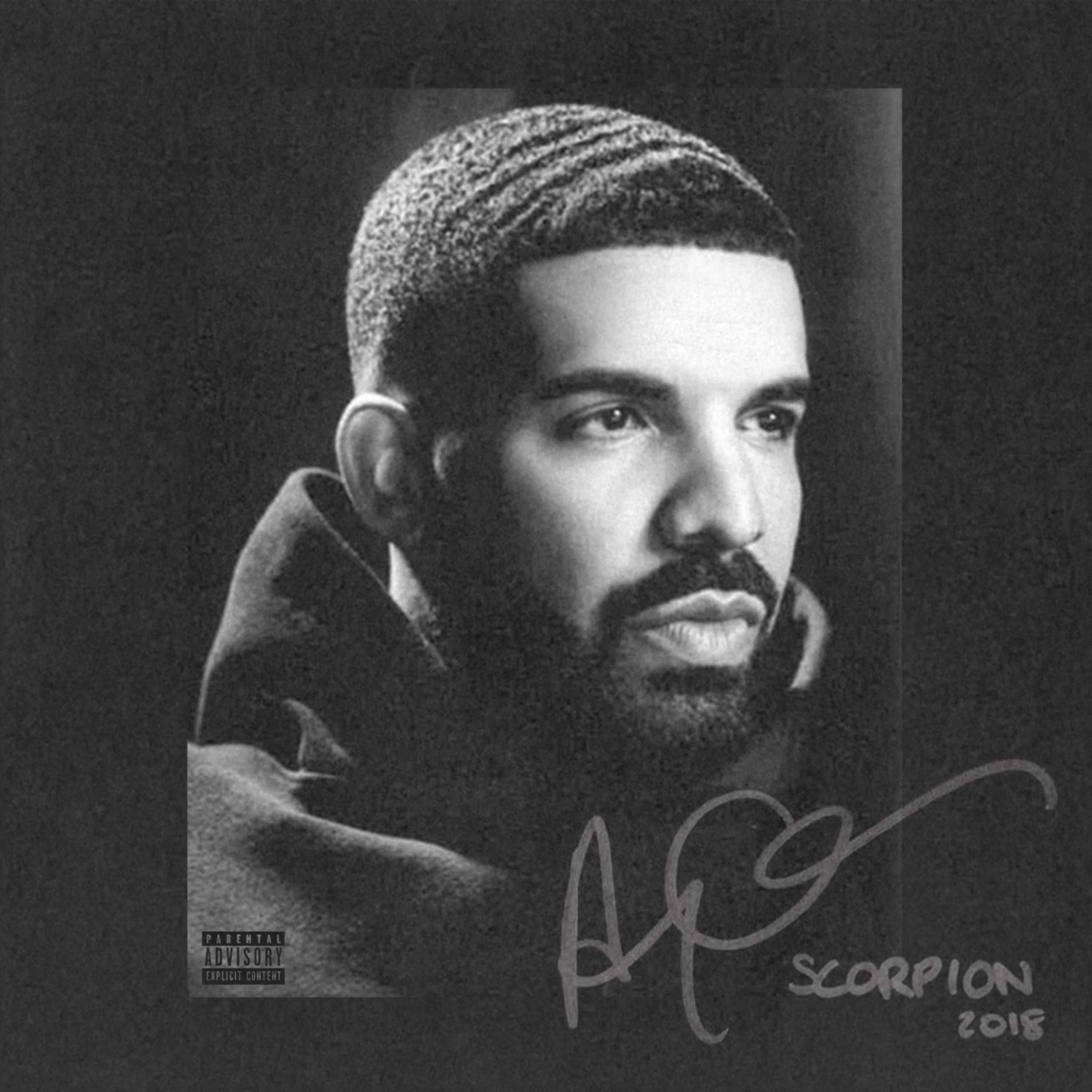Drake releases 25-track full-length ‘Scorpion’

Drake
Scorpion
Young Money / Cash Money Records · June 29, 2018
Even before we heard the first second of Drake’s highly-anticipated fifth studio album, Scorpion, it felt like we knew exactly what was coming. With the remarkable commercial and critical success of ‘Nice for What’ and ‘Gods Plan,’ we went into the album confident that Drake was seemingly better than ever at producing a hit, while also evolving as an artist. With Drake’s highly publicized, personal beef with GOOD Music President Pusha T coming to a head with Pusha T’s scathing diss track ‘The Story of Adidon,’ a retaliation (or at least acknowledgement) of the feud was to be expected.
And yet, when Scorpion actually dropped, we were once again surprised by a number of things. The first thing people point to is the length. The album, which has an A-Side (mostly hip-hop tracks) and a B-Side (mostly R&B/Pop tracks), runs almost an hour-and-a-half long and contains a total of 25 tracks. We see a limited number of official guests on Scorpion, of which include Ty Dolla $ign, the late Michael Jackson, and Static Major, and a surprising verse from rap heavyweight Jay-Z on Side A’s ‘Talk Up,’ which sees Drake go bar for bar against hip-hop’s business mogul over a thunderous Three 6 Mafia produced beat.
Drake dedicates a good amount of time to develop a trademark emotional painting of his life in 2018, with tracks such as ‘In my Feelings,’ ‘Emotionless,’ ‘Is There More,’ ‘Mob Ties,’ ‘8 out of 10,’ and others showcasing his ability to express his emotional vulnerability. These tracks provide an interesting contrast in content; standing beside braggadocios, defiant tracks such as ‘Nonstop’ see Drake giving insight into his skills as a businessman and rapper. Drake draws heavy influence from Memphis’ hip hop scene in this track, with the beat being produced by Memphis-bred Tay Keith and sampling Memphis’ own DJ Squeeky and Mack Daddy Ju’s 1995 track ‘My Head is Spinnin.’
This isn’t the only time on this album Drake pays homage to the different and distinct sounds that arise geographically within rap. The second single from the album, the Billboard #1 hit ‘Nice for What,’ has been described as having a “New Orleans bounce” that Drake used as a stepping stone to achieve his fifth number one record. On the final track of Side-B, ‘March 14,’ Drake waits until the final five minutes of his monstrous album to send us off with in-depth, personal conversation about his son, the mother of his child, and the feud that brought both him and all of GOOD Music to the center of the hip-hop world a month ago.
This album, which was heavily marketed on social media and streaming platforms prior to its release due to the Canadian rapper’s stake in the genre, sees Drake juggling topics like fatherhood, love, betrayal, heartbreak, money, and his extravagant lifestyle. The album broke numerous streaming records upon its release, including 132.45 million streams on Spotify in one day, shattering the previous record held by Post Malone’s Beerbongs & Bentleys by over 50 million. Despite unprecedented streaming statistics, the album has met mixed reviews critically, with the album’s overwhelming scope and subject matter being described as both a strength and a weakness, depending who you are talking to. The album has also been criticized for showing a lack of lyrical development from Drake and a heavy reliance on subject matter he has already been discussing in his music for ten years now.
With Drake getting so much off of his back, it will be interesting to see what comes of the situations in Drake’s life that are still up in the air. What will come of the beef between him and Pusha T? What are his next steps going forward into fatherhood? Will Drake ever find “true love?” If there is one thing we can be sure of, it is that if any of these questions are answered, we will surely hear about them from the man himself (preferably in the form of a very catchy hook).